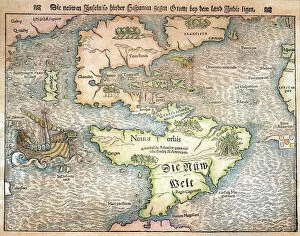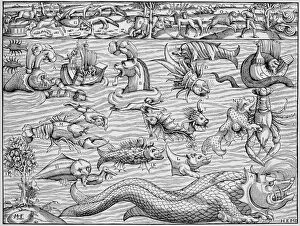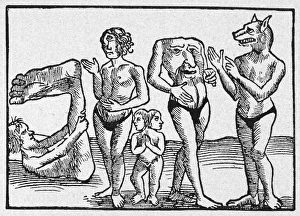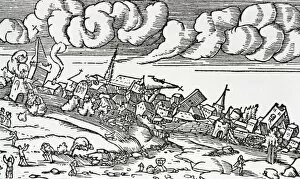Cosmographia Universalis Collection
"Discovering the Unknown
All Professionally Made to Order for Quick Shipping
"Discovering the Unknown: Sebastian Munster's Cosmographia Universalis" Step into the fascinating world of exploration and imagination with Sebastian Munster's renowned work, Cosmographia Universalis. This remarkable collection of maps, illustrations, and descriptions provides a captivating glimpse into the mysteries of the New World. In 1544, Munster unveiled his groundbreaking "Map of the New World, " offering an unprecedented depiction of uncharted territories. Embark on a visual journey as you explore this map adorned with intricate details and exotic landscapes that ignite curiosity about distant lands. Delve deeper into Munster's cosmography to encounter awe-inspiring sea monsters inhabiting the north Atlantic in his 1550 masterpiece. These mythical creatures captivate both sailors' fears and their imaginations, reminding us of humanity's eternal fascination with unknown depths. Not limited to sea monsters alone, it also showcases terrestrial beasts that roam our planet. Through vivid illustrations from various editions such as those from 1550 or even earlier in 1544, we witness an array of fantastical creatures coexisting alongside familiar animals found across continents. Munster's artistic prowess extends beyond depicting creatures; he captures Europe as a regal queen in a woodcut from his 1588 edition. This imaginative portrayal symbolizes Europe's dominance during this era while highlighting its cultural richness and influence on global affairs. Travel southward to Africa through Tabula Nova Partis Africae maps dating back to the fifteenth century. These ancient cartographic gems provide invaluable insights into early European perceptions of African geography and serve as historical artifacts connecting us to past civilizations' knowledge. Cosmographia Universalis not only explores new worlds but also offers glimpses into human society itself. In a woodcut dated 1552, we meet A Court Fool who brings levity amidst serious matters—a reminder that humor transcends time and place throughout history.












